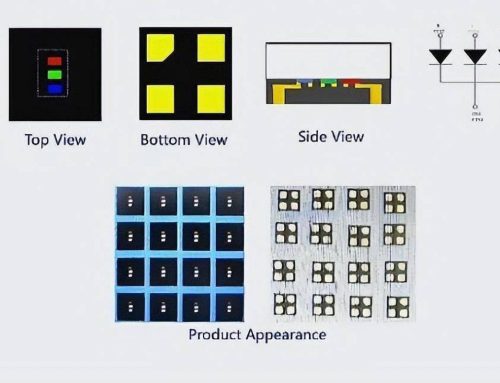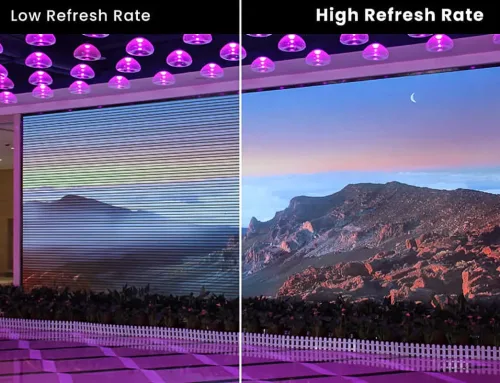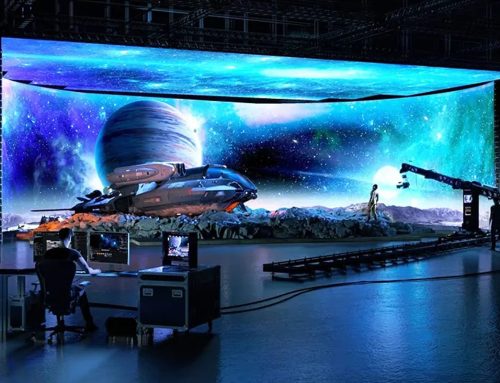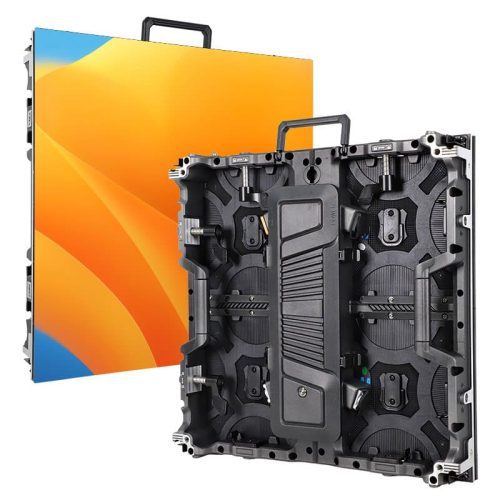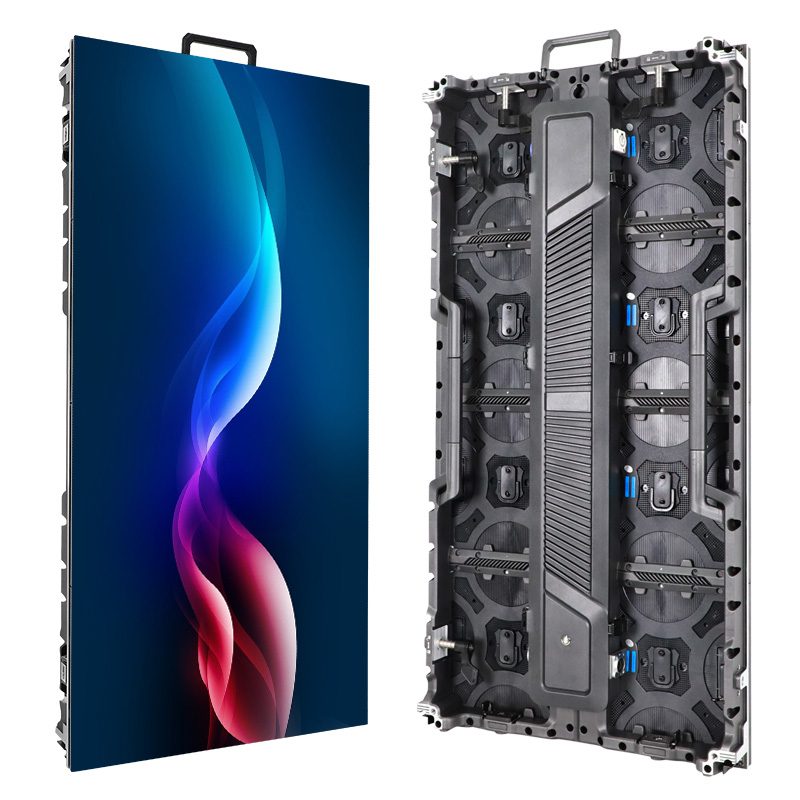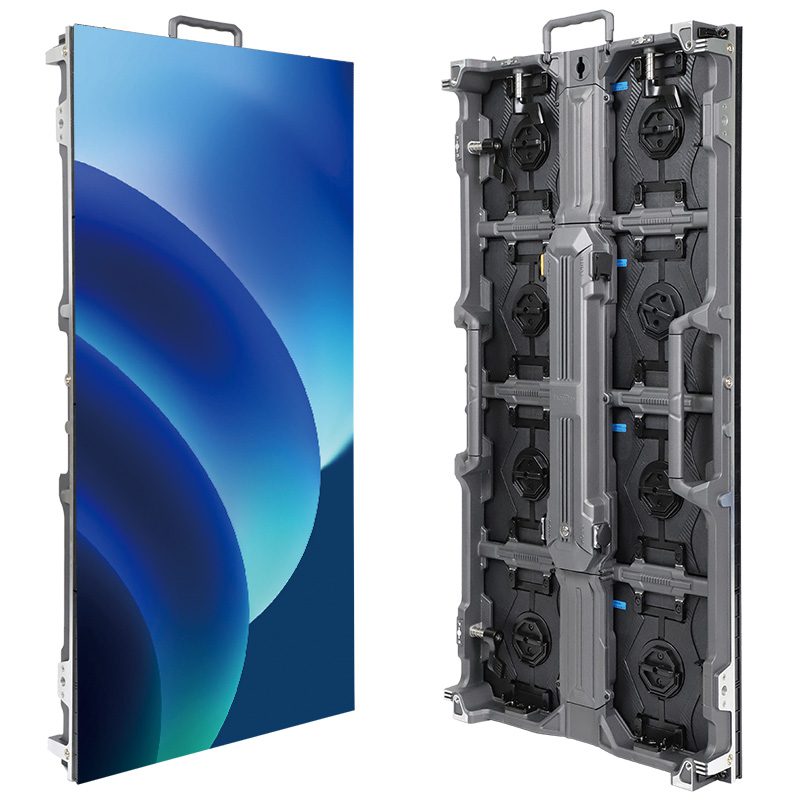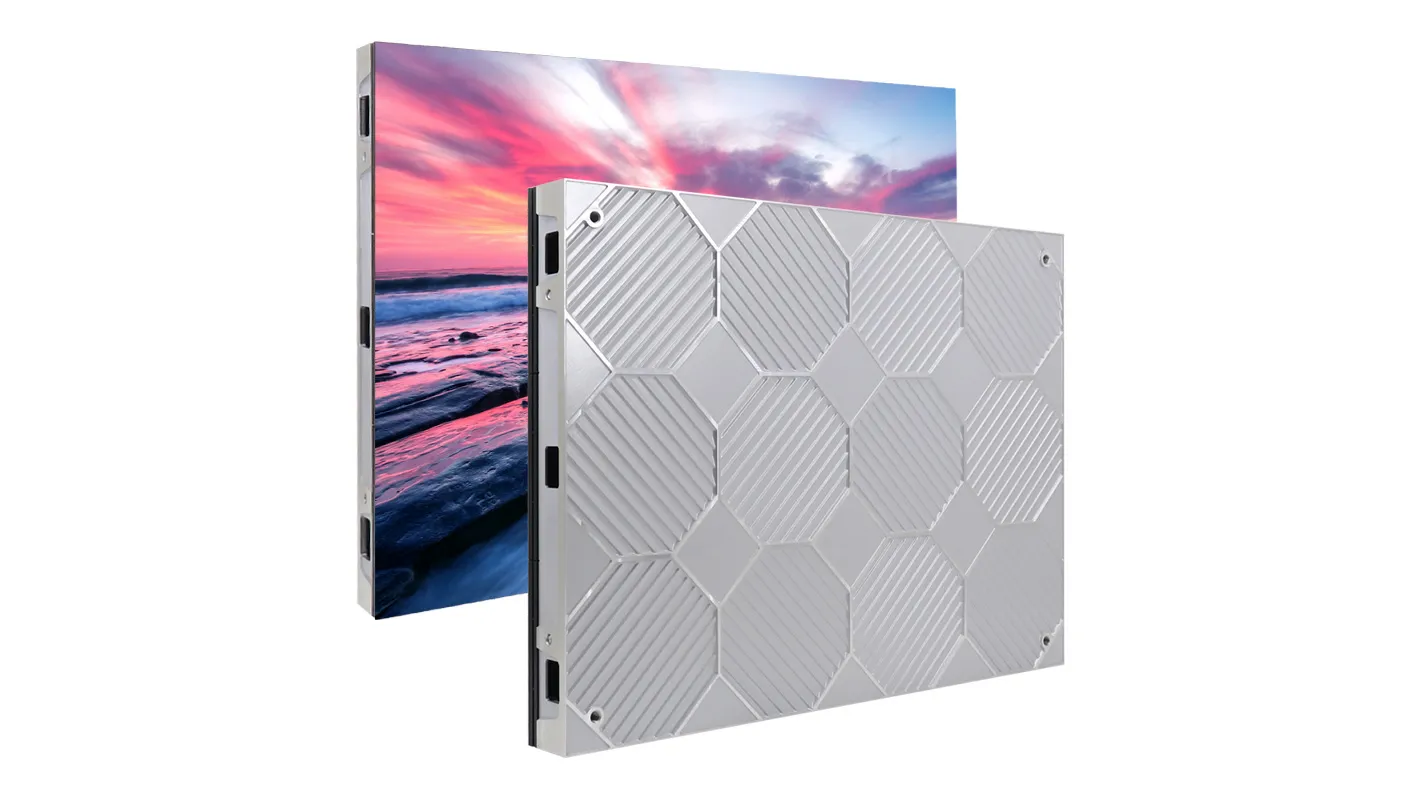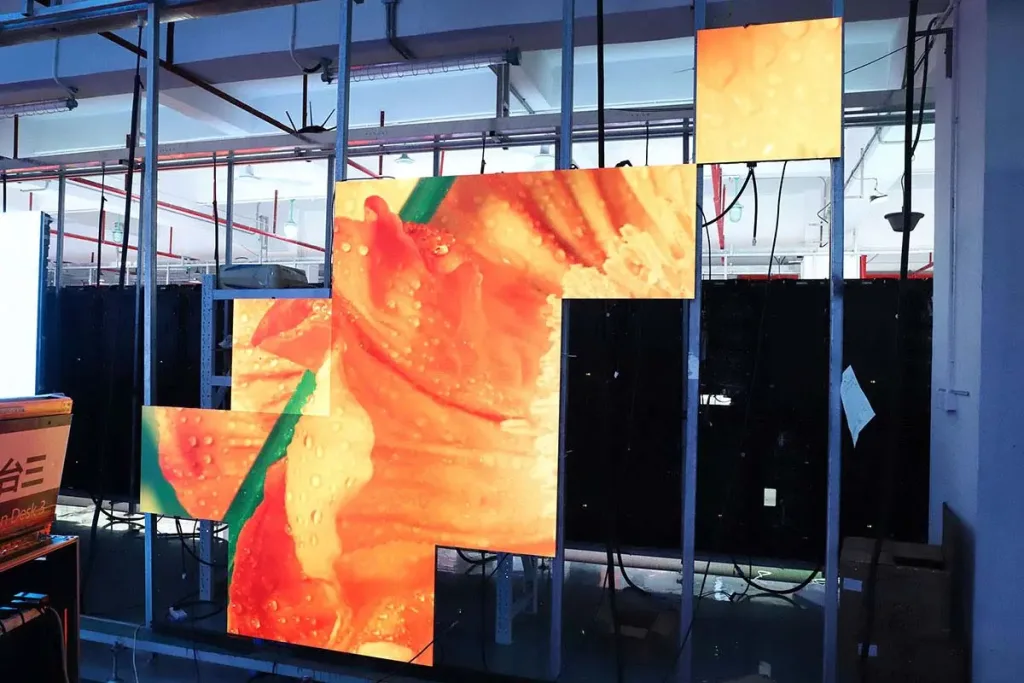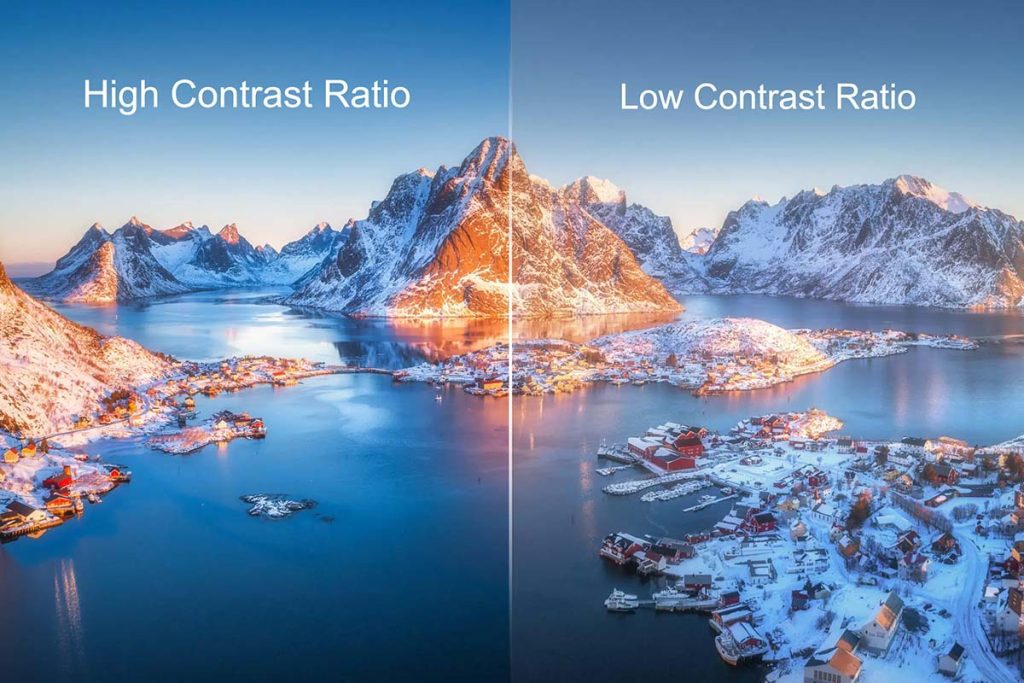LED Technology has dominated the light display areas.There are two crucial and exceptional types of LED: Micro LED and Mini LED. Both are extremely valuable in light production and deliver a top-rated performance.But they differ in their technology, emission type, and contrast levels. Today, we will compare mini LED vs. micro LED and explore which one is the best. Let’s know!
catalogue
1.What is a mini LED?
Mini LED or miniature LED is a display technology that has a small LED of 0.2mm behind the LCD screens. The mini LED allows for better dimming and increases the contrast compared to traditional LED displays. Instead of large zones, it has small zones and produces better dimming.

1.1 There are four main components of a mini LED
- Mini LED Backlights are microscopic LEDs. They lie behind the LCD panel and illuminate it.
- The LCD Panel is the crucial component that illuminates and produces images based on liquid crystal manipulation.
- Local Dimming Zones offer fine-grain dimming and control brightness across different screen areas.
- Diffuser and Light Guide Plate spread the light from Mini LEDs across the panel for uniform brightness.
1.2 How does mini LED work?
The working mechanism depends more on the LED clusters and LCD screens. The illumination occurs through the LED clusters while the display screens show the images. You can turn off a few clusters and make the brightness and contrast of your pictures and videos better.
1.3 Benefits and Drawbacks of Mini LED
There are a few drawbacks to mini LEDs. Let’s take a look!
Benefits :
- Higher brightness and contrast than traditional LEDs. Thanks to dimming features, it increases the brightness and elevates the contrast.
- More precise local dimming and better HDR. Turn off the clusters and produce better contrast, high brightness, and improve the quality of content in seconds.
- Slimmer form factor. Your TV or monitor design can be sleeker due to thinner backlight designs.
- Affordable. Don’t worry about costs— mini LEDs are cheaper and offer long-term benefits.
Drawbacks :
- Still reliant on LCD backlight. It doesn’t offer the self-emissive behavior. So, it depends on the LCD.
- Limited true blacks compared to Micro LED. Blacks may appear greyish due to backlight bleed, leading to decreased vision.
- Not as scalable for ultra-large displays. If you plan a large-scale display, it might fail.
2.What is a micro LED?
Micro LED is a self-emissive display technology compared to the mini LED and has microscopic LEDs. These lights emit their light and use inorganic Gallium Nitride (GaN) materials instead of organic elements.

2.1 Micro LED lights have four crucial components. These are:
- Red, Green, and Blue Micro LEDs are fundamental lights that self-illuminate and produce a full image.
- Substrate or Backplane. Supports the micro LEDs and provides electrical connectivity.
- Driver ICs and Controllers offer color, brightness, and pixel-level control.
- Optical Layers are used to enhance contrast, reduce reflections, and protect the micro LEDs.
2.2 How does micro LED work?
Micro LEDs have a few pros and cons discussed here.
Benefits:
- True blacks and superior contrast. The superior RGB lights offer a complete black color and peak contrast features.
- Best-in-class brightness and color accuracy. Micro LEDs can reach 2000–5000 nits brightness, overriding the effects of OLED and Mini LED.
- Extremely energy efficient. Low energy consumption and higher performance make it a highly efficient energy source.
- Longer lifespan. Inorganic materials are resistant to degradation and offer a more durable structure to the LED lights.
- Ideal for ultra-large video walls. Create a massive display of any size or shape for your videos.
Drawbacks:
- High cost of production and ownership. The micro size of LEDs causes precise production. Therefore, the prices jump due to expert manufacturing.
- Limited availability and higher installation complexity. Because of smaller structures and complex assembly, micro LEDs are still rare in the local or international markets.
- Manufacturing yield challenges. Production is still not that big. What matters the most is the accuracy; it is tough and causes several defects.
3.Mini LED vs. Micro LED: What’s the Difference?
Mini LED vs. Micro LED is pretty straightforward. It is because of the difference in operating technologies and issues with the contrasts. Let’s start a head-to-head comparison of Mini LED vs. Micro LED.
| Feature | Mini LED | Micro LED |
|---|---|---|
| Emission Type | Backlit (requires LCD panel) | Self-emissive (each pixel emits its own light) |
| Display Structure | Mini LEDs behind an LCD layer | Independent RGB micro-LEDs as pixels |
| Black Levels | Improved over traditional LED, but not perfect blacks | True blacks with infinite contrast |
| Brightness | Very high brightness (~1000–2000 nits) | Extremely high brightness (2000–5000+ nits) |
| Contrast Ratio | High, but limited by LCD | Very high/infinite contrast |
| Color Accuracy | Excellent, though influenced by LCD and filters | Exceptional, pure color reproduction |
| Viewing Angles | Wide, but may show some color/brightness shifts | Very wide, consistent color and brightness |
| Pixel Control | Local dimming zones (hundreds to thousands) | Pixel-level control (millions of individually lit LEDs) |
| Pixel Pitch Capability | Moderate (~0.7mm and higher) | Ultra-fine (<0.5mm possible) |
| Scalability (Large Displays) | Limited scalability due to LCD/backlight design | Highly scalable with modular seamless panels |
| Energy Efficiency | More efficient than traditional LED, but still backlit | Very energy-efficient, emits light only when needed |
| Lifespan | Long, but LCD layer may degrade | Extremely long (>100,000 hours), no burn-in |
| Cost | Moderate to high (consumer-friendly premium tech) | Very high (currently premium/enterprise only) |
| Market Availability | Widely available from many consumer brands | Limited availability; used in luxury/pro/commercial installations |
| Typical Applications | TVs, monitors, corporate displays, retail signage | Stadiums, control rooms, high-end theaters, premium video walls |
3.1 Emission type: backlit vs self-emissive
Emission type matters because of the additional tools you require for the respective image displays.Mini LED vs. Micro LED shows a significant difference in this regard.
Mini LED is insufficient without the LCD screens. Mini LED fails to emit images itself. Hundreds or thousands of diodes work on the backend to illuminate the LCD screens and produce quality images.
On the other hand, micro LEDs have self-emissive features. They use inorganic Gallium Nitride (GaN) materials to depict the images. There is no need for LCD screens, reducing the overall component usage.
3.2 Brightness and contrast levels
If you are viewing content in HDR and require a high-performance system, the LED can be a suitable solution if it has appropriate integrations.This is especially true when comparing Mini LED vs. Micro LED in terms of brightness, contrast, and image control.
For example, mini LEDs are suitable for high brightness and contrast compared to conventional LEDs. However, the LCD layer limits this feature and puts some burdens regarding the light control.
In comparison, micro LEDs are legends of brightness, contrast, and control. Although their installation is complex, their accuracy is matchless. Their self-emissive features provide full-time brightness and contrast control.
3.3 Cost and availability
Cost is a significant factor influencing the basis of decisions in the Mini LED vs. Micro LED. If an LED source is too expensive and difficult to achieve, you’ll abandon it for sure.
Mini LED is approachable and features accuracy because of its combination with LCD screens. Their size is also achievable, 0.2mm. Therefore, they are affordable compared to micro LEDs.
In contrast, micro LEDs are a headache for both the costs and availability. The higher costs are due to the precise integration of LEDs in the circuit that requires thousands of hours of work. Moreover, they are rare in the markets, causing the overall surge in costs.

3.4 Scalability for large video walls
Today, we want futuristic solutions and advanced technology that scale as we move on. Let’s check in this case whether mini or micro LEDs can have scalability or not.
Mini LEDs are conventional in terms of scalability. It is because of LED uniformity and LCD layer complexity that elevate the problems.
In the parallel world, Micro LEDs are challenging structures with the potential to scale at higher levels. Their modular structure and the ability to expand for large video walls make them look like a futuristic solution for consumers. Micro LEDs dominate stadiums, control centers, and immersive theaters.
3.5 Durability and lifespan
Whenever you are purchasing an LED display system, the quality and durability are something you can’t ignore. In the Mini LED vs. Micro LED debate, durability plays a significant role. While LEDs are technically durable compared to other light sources, let’s compare our antagonists.
Mini LEDs are less durable than micro LEDs. However, it wears less compared to the OLED. The LCD screen is prone to damage and wear.
Micro LEDs offer an opposite scenario. They have inorganic Gallium Nitride that is resistant to vibrations and all damaging factors. You can expect even more durability because of pure LEDs. With a lifespan of 100,000+ hours, it is suitable for critical environments where durability is the most significant factor.
3.6 Viewing angle and color performance
Color performance is a significant challenge. What if you see a grey color instead of black? That happens when you choose inefficient technology.
Mini LEDs don’t have an RGB color performance. They show a grey color and are affected by the LCD layer limitations. Despite that, they offer improved viewing angles.
Compared to it, Micro LED is a game-changer. It offers the red, green, and blue diodes, making any color combination on the screen with excellent accuracy. The direct light emission offers flawless color combinations and better viewing angles.
3.7 Pixel pitch capabilities
Pixels can still affect overall image quality, sometimes making visuals appear pixelated or less sharp. When it comes to pixelation and display clarity, Mini LED vs. Micro LED presents a clear contrast.
Mini LED relies on LCD technology for the pixel displays. For example, it can support moderate pixel pitches ranging from 0.7mm to several mm. The better the LCD technology, the better the pixel pitches.
Micro LEDs are the kingmaker. Their image quality is next-level and handles an ultra-fine pixel pitch (<0.5mm). It helps them reach the 4K video resolution streaming and quality results.
4.Mini LED vs. Micro LED: Use Cases and Scenarios of Selection
If you are wondering about the applications, the cases are simple:
4.1 Mini LED Use Cases
Mini LEDs are useful in the following applications.
Corporate Meeting Rooms
Corporate meeting rooms require a high brightness and contrast. The indoor brightness power of mini LEDs helps light environments and present their meetings and new products in a more powerful way. You get a cost-effective large-screen solution.
Retail Signage
Do you want to promote your products? Get with the mini LED as its vibrant displays enhance product presentation. Moreover, it is affordable to deploy across multiple store locations.
Broadcast studios
The dimming features and extensive brightness options with the LCD projection help elevate the focus on the broadcasting and provide a solution for low-budget systems.
Digital advertising
If you are planning indoor digital advertisements, mini LEDs are the best option here. High luminance and contrast enhance the impact and boost the focus. It is more economical than OLED or micro LED.
4.2 Micro LED Use Cases
Micro LED is designed to fight all the odds and join the following applications.
Control rooms and mission-critical operations
Micro LED leads the control rooms and mission-critical operations with 24/7 reliability, true blacks, and long lifespan. There is zero risk of image retention or degradation.
High-end residential theaters
RGB color ranges produce the true black colors and enhance the views of the videos. Users can focus on the display screens streaming the videos. Immersive visuals make micro LEDs an ultimate choice in such situations.
Luxury retail environments
If you are a luxury retail store looking for sales, consider the micro LED instead of the mini LED. It helps promote products in your vicinity and enjoy the next-level streaming quality.
Stadium and arena displays
Large-scale displays work better only with precise lighting systems and the brightness of the micro LEDs. The power of scalability further helps in such cases.
Ultra-premium video installations
Do you want to elevate your video experience? Art installations, VIP lounges, and innovation showcases with micro LEDs show the magic on the grounds.
5.Mini LED vs. Micro LED:Which technology are you going to use?
It can be challenging because both technologies have a few pros and cons. However, selection becomes effortless if you divide your choice based on the following factors.
Budget considerations
How much is your budget? A high budget is required for the micro LEDs because of their advanced technology and effective integration in the system. At the same time, a low to moderate budget can work for the mini LEDs. In their budget range, they offer better features compared to conventional LED technology.
Screen size and pixel pitch requirements
The number of screens and pixel pitch requirements can impact the selection. If you plan to run your videos on 55″–100″+ screens, mini LED is a more affordable and suitable choice. However, it can offer a moderate pixel pitch. If you want a 4k resolution and a scalable screen size, you should stop at the micro LEDs.

Installation environment
Indoor or outdoor? Where do you plan to install your LED technology?
Mini LEDs are suitable for the indoor environment because of their lower durability and more issues with the LCD projections outside.
Micro LEDs can be the first choice if you have outdoor installation plans. It offers coherence in performance and color accuracy with high performance and energy efficiency.
General display vs critical viewing
General presentations and signage don’t require a high budget. It is because you can install the mini LEDs and use this technology to give your presentation.
While micro LEDs are more than that. They offer a comprehensive view of your images and videos. The critical viewing features and angles can make their places among top-class solutions available.
Energy efficiency
If you want superior energy efficiency, LED technology is far ahead of the competitors’ solutions.
Comparing the mini LED with the micro LED, the mini LED is less efficient. It is because of the energy consumption of the larger LCDs. However, micro LEDs are self-emissive and consume less energy while producing high-end images and consistent content.
Vendor availability and support
Before you jump into the purchase, confirm whether this solution is even available. Mini LEDs are widely available because of fewer hassles in manufacturing and quick manufacturing processes. Moreover, it contains fewer defects, leading to effective consumer and supplier confidence.
Micro LEDs are rare and cause more defective products because of the extremely high accuracy required. So, the vendor’s availability and support are less in this case.
6.FAQs
7.Conclusion
Mini LED vs. Micro LED is a common comparison when choosing display technologies. Mini LED is an evolution of LCD. It is a budget-friendly tool with a high contrast, brightness, and value for indoor, corporate, and advertising applications.Micro LED is the future due to its support for large-scale or mission-critical installations. However, it can bore holes in your pockets.




